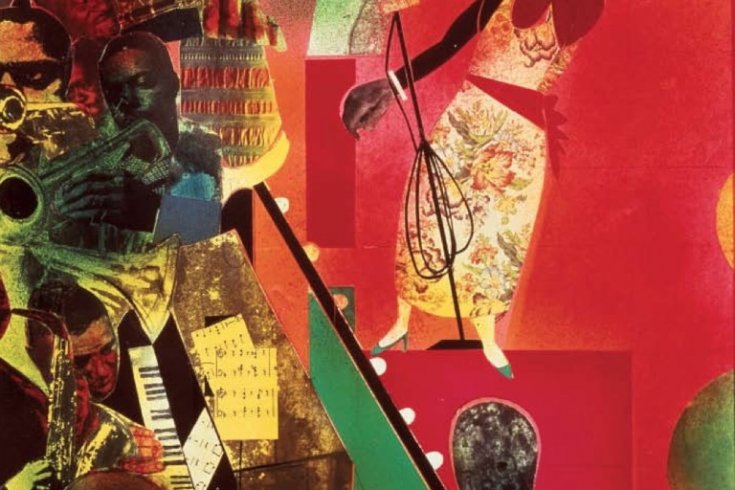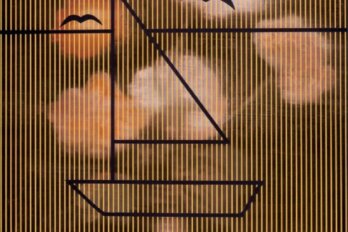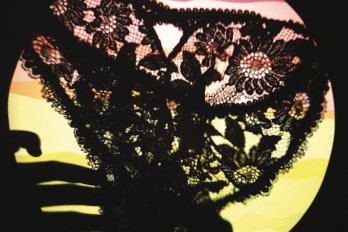A few months ago, I was talking to a bassist friend about the current jazz scene. “Sometimes,” he said, “I wonder if jazz is going to become a purely interpretive art form, like classical music.” He wasn’t kidding.
Every generation of jazz aficionados has included a small but dedicated group of doomsayers who have glumly predicted that the end of the music is nigh. But the jazz community today is pervaded by a general malaise to which no one seems immune. Despite a thriving jazz festival circuit that stretches from Mumbai to Medicine Hat and a recent spate of jazz-oriented albums from pop stars like Rod Stewart and Smokey Robinson, many people feel that the art form has stalled, and that jazz musicians have been treading water since the late 1960s.
Assigning blame for this lack of forward momentum has become a popular pastime in jazz circles. Some point to the dearth of jazz venues where young musicians can experiment with new sounds. Others blame record labels that would rather milk their back catalogues for reissues than gamble on young, unknown iconoclasts. Still others rail against the proliferation of university jazz programs that produce hordes of clones, and the lack of state funding for a music that ceased to be popular shortly after World War II. And there’s always the argument that trumpeter Wynton Marsalis and his fellow neoclassicists have sucked the life out of the music. Besotted by the classic jazz produced from the 1920s to the 1960s, musicians like Marsalis—now artistic director of Jazz at Lincoln Center and the most famous jazz musician in the world—are routinely accused of devoting more time and energy to reconstructing historical styles than inventing new ones, and of sacrificing innovation on the altar of ancestor-worship.
In Is Jazz Dead (Or Has It Moved to a New Address), the British jazz critic Stuart Nicholson concludes that European jazz musicians, with their plush state subsidies and healthy disregard for tradition, represent the last great hope for the music. By contrast, Gary Giddins, the current dean of American jazz writers, admits to pessimism. “For the first time,” he wrote in a 2004 essay, “How Come Jazz Isn’t Dead,” “a large percentage of the renewable jazz audience finds history more compelling than the present, and young musicians, who once aimed above all else for an original voice, are now content to parrot the masters.”
For the first fifty years or so of its history, jazz underwent such regular and significant change that the music itself served as a trope for progress and modernity. By the late 1920s, trumpeter Louis Armstrong had taken the collectively improvised polyphony of early New Orleans jazz and turned it into a soloist’s art. Soon after, swing-era musicians expanded the music’s harmonic palette while introducing ever more sophisticated techniques of arrangement and orchestration. The 1940s saw the birth of bebop, a radically disruptive movement led by saxophonist Charlie Parker and trumpeter Dizzy Gillespie that rendered jazz more dissonant, more virtuosic, and less dancer-friendly than ever before. And the 1950s witnessed simultaneous efforts to extend and retrench the harmonic complexity of the music, resulting in both the furious chordal assault of John Coltrane’s Giant Steps and the expansive modal jazz of Miles Davis’s Kind of Blue.
By the early 1960s, however, jazz had entered a phase from which it has yet to recover. Musicians like pianist Cecil Taylor and saxophonist Ornette Coleman, frustrated with the limitations of conventional jazz, began taking radical liberties with such fundamental musical parameters as meter, harmony, and tonality. The resulting music, known as free jazz, inspired considerable controversy. Fans, critics, and musicians all debated whether music that differed so substantially from what had come before—that did not necessarily swing, or allude to the blues, or possess the kind of melodic, formal, and temporal coherence normally associated with jazz—was, in fact, jazz at all (or music, for that matter).
Nonetheless, many of the freedoms introduced by the avant-garde in the 1960s were rapidly assimilated into the mainstream. And therein lies the crux of the problem facing today’s jazz musicians: the last great expansion in the basic vocabulary of the music took place over thirty years ago, when a generation of performers wedded the free-ranging approaches of Coleman, Taylor, and others with more conventional techniques. Since that time, a number of influential stylists have graced the scene, but it has become increasingly difficult for jazz musicians to say anything shockingly new. Jazz may no longer be capable of producing revolutionary movements. After decades of tumult, the recent lack of upheaval feels an awful lot like stagnation.
Classical music faced a similar impasse in the 1950s. Reacting against the rigid academic determinism of modernist composition, composers like John Cage and Morton Feldman defied every convention. Ultimately, their experimentation with “chance procedures—“making music by rolling dice— didn’t just result in new and interesting combinations of sounds; it also ensured that merely being transgressive would never again serve as a guarantee of originality. Once you’ve broken all the rules, continuing to break them is no longer a very big deal.
Contemporary jazz musicians find themselves in a similar quandary. As the pianist Robert Glasper says, “You can’t push harmony any further without it being free jazz—and that’s old.” Of all the challenges currently facing jazz, this is the big one—because it is aesthetic and therefore not easily resolved, and because it calls into question the very notion of what jazz is. What becomes of a musical tradition whose very essence has been pegged to modernity when modernity is no longer easily defined
If jazz is going to remain something other than a sacred relic venerated by a coterie of acolytes, musicians must find a way to breathe fresh life into the music while simultaneously broadening its appeal. Fortunately, some are already recognizing that they are by no means restricted to rummaging around in their own well-trodden backyard for inspiration. There is a wide world of music out there from which to beg, borrow, and steal ideas, and the most adventurous jazz musicians are doing just that. In the process, they are reclaiming the inclusive ethos that once lay at the heart of the music.
Ever since the pianist and composer Jelly Roll Morton first spoke of a “Spanish tinge—“Cuban rhythmic flavour —in early New Orleans jazz, critics and historians have made a point of the music’s polyglot tendencies. The very first jazz recordings reveal a music stitched together from European marching-band music, ragtime, and the blues, while the beboppers of the 1940s indulged a taste for Afro-Cuban rhythms that ultimately begat Latin jazz. Yet bebop also fostered a puritanical strain of modernism that encouraged successive generations of musicians to shun other, less sophisticated genres. As the jazz world became increasingly insular and partisan, efforts to combine jazz with more popular forms like rock in the 1960s and 1970s were hotly contested, and often rejected outright. In recent years, the pendulum has swung decisively in the opposite direction. Never before have so many jazz musicians been actively involved in mining so many musical veins with such apparent ease and sophistication. Never before, of course, have musicians and their audiences had such unfettered access to so many different kinds of music. Walk into one of New York City’s more adventurous jazz clubs and chances are good that the music you’ll hear will sound a great deal like something other than jazz—be it hip hop, electronica, or world music.
“We’re far from seeing the end of all these fusions,” says André Menard, co-founder and artistic director of the Montreal Jazz Festival, the largest jazz festival in the world and one of the most consistently adventurous. “It’s a reflection of the era, and it’s only natural that it would accelerate thanks to the availability of music, the immediacy of its creation, and the way that you can now broadcast your music all around the world over the Internet.” In short, hybridization and cross-pollination have become the way of the world. “If you listen to contemporary pop music, that’s just the way that music is made now,” notes trumpeter Dave Douglas. “There are constant references being made to all kinds of music. In a way, jazz is just catching up.”
Douglas himself was an early exponent of jazz without borders. In the early 1990s, he sparked a fad by fusing jazz with Balkan music; as a founding member of saxophonist John Zorn’s Masada Quartet, he helped mate modern jazz with Jewish music; and he has had a long-standing interest in combining jazz improvisation with twentieth-century classical music. “So many of us are looking for a new vocabulary and new sounds—just as the beboppers were, and the sixties avant-garde,” he says. “It’s all a part of trying to grow the music.” Douglas’s most recent project, Keystone, blends jazz with electronica. In a recent performance at Carnegie’s hip new Zankel Hall, drummer Gene Lake set down the stuttering rhythms of techno and funk; Adam Benjamin generated all manner of freaky space-gun sounds with his Wurlitzer keyboard; turntablist DJ Olive spun, scratched, and beat-matched to his heart’s content; and Douglas and saxophonist Marcus Strickland improvised at length over the ensuing musical stew. The members of Keystone have played with everyone from Ornette Coleman to modern soul artist D’Angelo, and they bring that collective experience to bear in every bar of their music.
Younger players like Robert Glasper, twenty-seven, are achieving an even subtler rapprochement between jazz and contemporary pop music. On his recent Blue Note release, Canvas, Glasper rarely uses electronics, and his melodic and harmonic language comes straight out of the modern jazz piano tradition. His rhythmic orientation, on the other hand, and the forms he gives to his compositions, are deeply marked by hip hop. A typical Glasper tune loops and repeats in ways that are more neo-soul than neo-bop, and his solos have the kind of slippery, elusive feel with which the best DJs flavour their work. Moreover, his drummer and bassist slip easily between swing and the furious, interlocking patterns of drum “n’ bass. They are not alone: many young rhythm-section players have become adept at reverse-engineering the computer-generated patterns that lie at the heart of contemporary pop by playing them on acoustic instruments. Like Douglas, Glasper sees his willingness to reference other genres as something that links him to, rather than distances him from, his forebears. “They touched on what they had, but now we have so much more music to influence us than they had back in the day,” he says. “If Coltrane were around today, he’d be doing the same thing.”
Both men’s music defies easy categorization. Is this stuff jazz, or hip hop, or something in between Questions like this are becoming increasingly irrelevant, as musicians and audiences grow ever more inclined to accept musical miscegenation as a way of life and taxonomical exercises become confined to the radical fringe. Most audiences, particularly young ones, simply respond to what they like, regardless of what it’s called. During a recent appearance at New York’s Knitting Factory, a club that has largely abandoned jazz programming in favour of broader alternative-music fare, Glasper and his trio had the crowd whooping and hollering with an enthusiasm rarely seen at jazz shows. And Keystone filled Zankel with the kind of twenty- and thirty-something audience that more conventional jazz acts no longer attract.
A member of the jazz police might question whether all of this is really part of “the tradition” (if that tradition is taken to be swinging 4/4 jazz with an emphasis on ballads, blues, and standards). Yet there’s more to the tradition than a received repertoire or a specific set of musical devices; there’s also a commitment to exploration, experimentation, and adventure. “To me, it’s all about trying to pay homage to jazz as a progressive music,” says Douglas. “Learning the music of Thelonious Monk and Eric Dolphy and Woody Shaw was all about learning this cutting-edge stuff. I’ve looked toward the Balkans, toward klezmer, toward contemporary classical music for the same reason. Working with electronics is just another way of getting at something new and different.”
The same might be said of recent attempts to combine jazz with various forms of world music. Much is made of the way in which American music and culture have spread around the world like some kind of post-colonial plague. But the same global marketplace that has allowed jazz to colonize musical ecosystems from Norway to Benin has also allowed music from the far corners of the world to appropriate jazz. The routes of musical exchange have become so complicated, and personal and cultural identity so densely layered, it’s virtually impossible to keep track of who’s playing what.
Alto saxophonist Rudresh Mahanthappa’s parents, for example, emigrated from Bangalore to the US, where Mahanthappa grew up with little connection to his Indian heritage. Nonetheless, while attending Berklee College of Music in Boston, he became fascinated by Indian music. For the past several years, he and pianist Vijay Iyer have cunningly applied Indian musical techniques to jazz, often in ways so sophisticated as to be barely audible.
Mahanthappa’s latest project, the Indo-Pak Coalition, takes Indo-jazz fusion to an altogether different level. At its debut performance this past January at Joe’s Pub in Manhattan, the group played selections from Mahanthappa’s recently completed Apti suite. The name Apti, which means “coming together” or “gathering” in Sanskrit, proved to be particularly appropriate. Whether composed or improvised, Mahanthappa’s unmistakably jazzy melodies were dressed in the structures and forms of Hindustani classical music. As Mahanthappa soloed, tabla player Dan Weiss played brisk rhythms called thekas, and guitarist Rez Abbasi improvised melodic ostinatos known as lahras. At times, it was hard to tell whether the performance was a jazz concert or a classical North Indian recital. And that was the point. “I like the idea of putting this format forward but at the same time saying, “I am a jazz musician, and I’m not going to improvise like an Indian musician,’” says Mahanthappa.
This kind of musical pluralism—a commitment to aural omnivorousness, to embracing what the American composer John Adams calls the “shuffle” sensibility of a contemporary musical culture in which the boundaries between genres are rapidly eroding—lies at the heart of the most interesting jazz being performed today. It also bodes well for the future of the art form. Jazz may never again experience the wondrous chaos of the 1960s, but there’s plenty of energy left in the music. And as usual, most of that energy and creativity are to be found at the margins—margins that grow more porous with each passing day.





